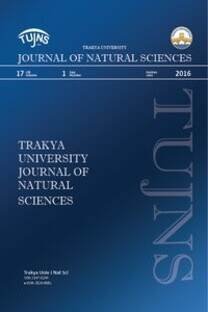The vocal repertoire of Graphiurus parvus, and comparisons with other species of dormice
ses çıkartma, hayvanlar arası haberleşme, Gliridae, fareler, hayvan davranışları
Graphiurus parvus'un vokal repertuarı ve diğer ağaç faresi türlerininki ile karşılaştırılması
vocalization, communication between animals, Gliridae, mice, animal behaviour,
___
- Baudoin, C. Le systéme acoustique de communication intraspécifique du lérot. J. Psychol. norm. pathol. 79: 37-54, 1982. Baudoin, C.; Niaussat, M.-M.; Valentin, S. Acoustic communication and auditory sensitivity in the garden dormouse, Eliomys quercinus L. Acta zool. fenn. 171: 103-106, 1984. Boratynski, P.; Rachwald, A.; Nowakowski, W.K. Ultrasound communication calls in forest dormouse (Dryomys nitedula). Poster presented at the IVth International Conference on Dormice, 13-16 September 1999, Edirne, Turkey, 1999. Holden, M.E. Family Myoxidae. In: Mammal species of the world: a taxonomic and geographic reference. Second edition. Ed. by D.E. Wilson & D.M. Reeder. Washington and London: Smithsonian Institution Press. Pp. 763-770, 1993. Kahmann, H.; Ostermann, K. Wahrnehmen und Hervorbringen hoher Töne bei kleinen Säugetieren. Experientia 7: 268-269, 1951. Kingdon, J. East African mammals. An atlas of evolution in Africa. Vol. IIB. London: Academic Press, 1974. Koenig, L. Das Aktionssystem des Siebenschläfers (Glis glis L.). Z. Tierpsychol. 17: 427-505, 1964. Konstantinov, A.I.; Movchan, V.N. Zvuki v zhizni zverei. [Sounds in the life of animals; in Russian]. Leningrad: Isdatelstvo Leningradskogo Universitjeta. 304 pp., 1985. Minato, S.; Hikida, T. Vocalization of the Japanese dormouse, Glirulus japonicus: repertoire and development of vocalization in the young. Paper presented at the IVth International Conference on Dormice, 13-16 September 1999, Edirne, Turkey, 1999. Schleidt, W. Reaktionen auf Töne hoher Frequenz bei Nagern. Naturwiss. 39: 69-70, 1952. Schreitmüller, W. Der Baumschläfer (Dryomys nitedula Pall.) in Gefangenschaft. Z. Säugetierk. 17: 155-157, 1952. Schulze, W. Beiträge zum Vorkommen und zur Biologie der Haselmaus (Muscardinus avellanarius L.) und des Siebenschläfers (Glis glis L.) im Südharz. Hercynia 7: 355-371, 1970. Webb, P.I.; Skinner, J.D. The dormice (Myoxidae) of southern Africa. Hystrix (n.s.) 6: 287-293, 1995. Zippelius, H.-M.; Goethe, F. Ethologische Beobachtungen an Haselmäusen (Muscardinus a. avellanarius L.). Z. Tierpsychol. 8: 348-367, 1951.
- ISSN: 1302-647X
- Yayın Aralığı: 1
- Başlangıç: 2018
- Yayıncı: -
Density and breeding of Muscardinus avellanarius L., 1758 in woodlands of Sicily
Maurizio SARA, Giulia CASAMENTO, Antonio SPINNATO
Ecology of the garden dormouse (Eliomys quercinus) inn the alpine habitat
Sandro BERTOLİNO, Italo CURRADO
Weight changes of the comon dormouse (Muscardinus avellanarius L.) during the year in Lithuania
An attempt to estimate the size and density of Dryomys nitedula population in the Bialowieza Forest
Wojciech K. NOWAKOWSKI, Pawel BORATYNSKI
Dormice in the diet of owls in the Middle East
Winter activity in the forest dormouse Dryomys nitedula
The vocal repertoire of Graphiurus parvus, and comparisons with other species of dormice
Rainer HUTTERER, Gustav PETERS
